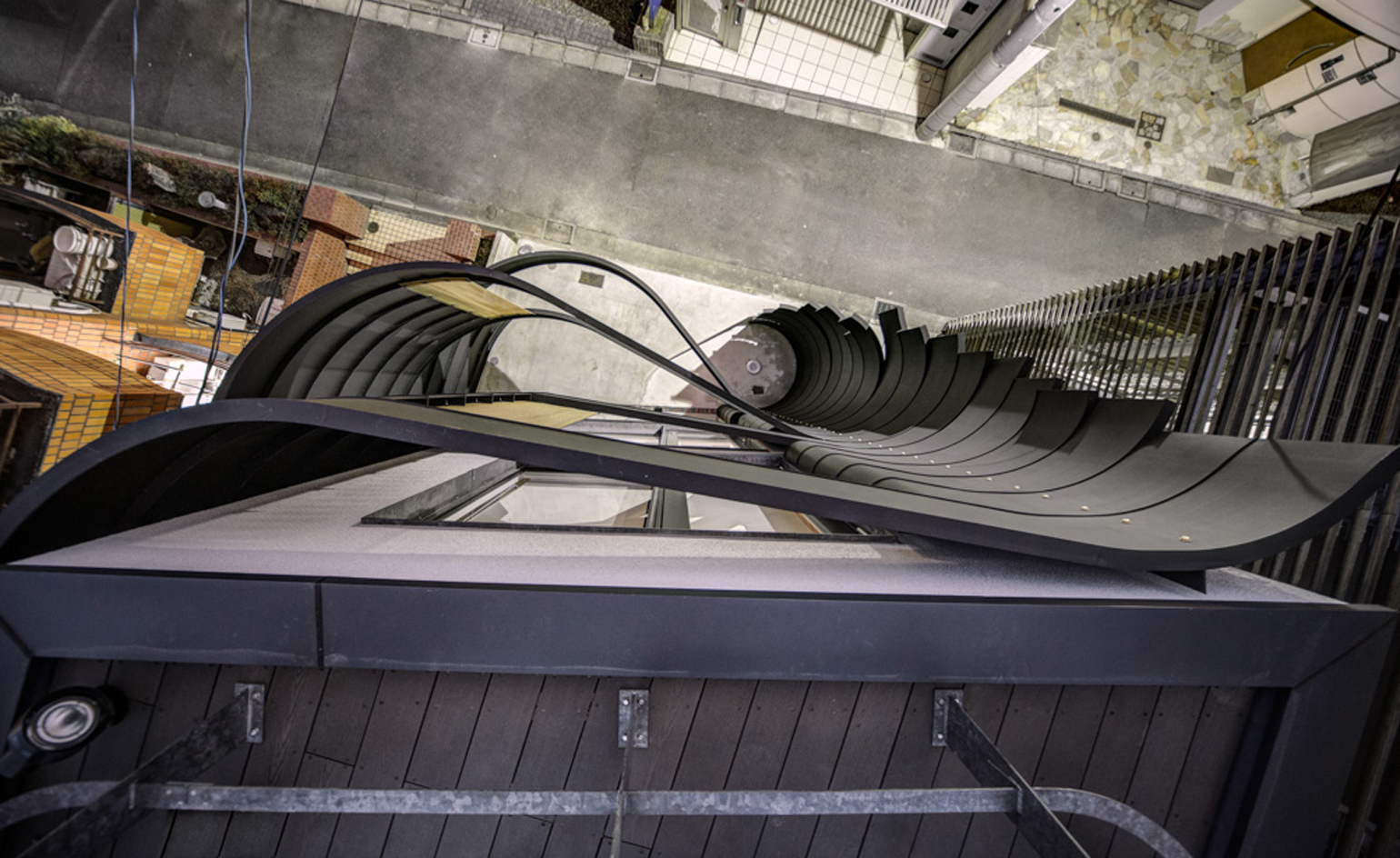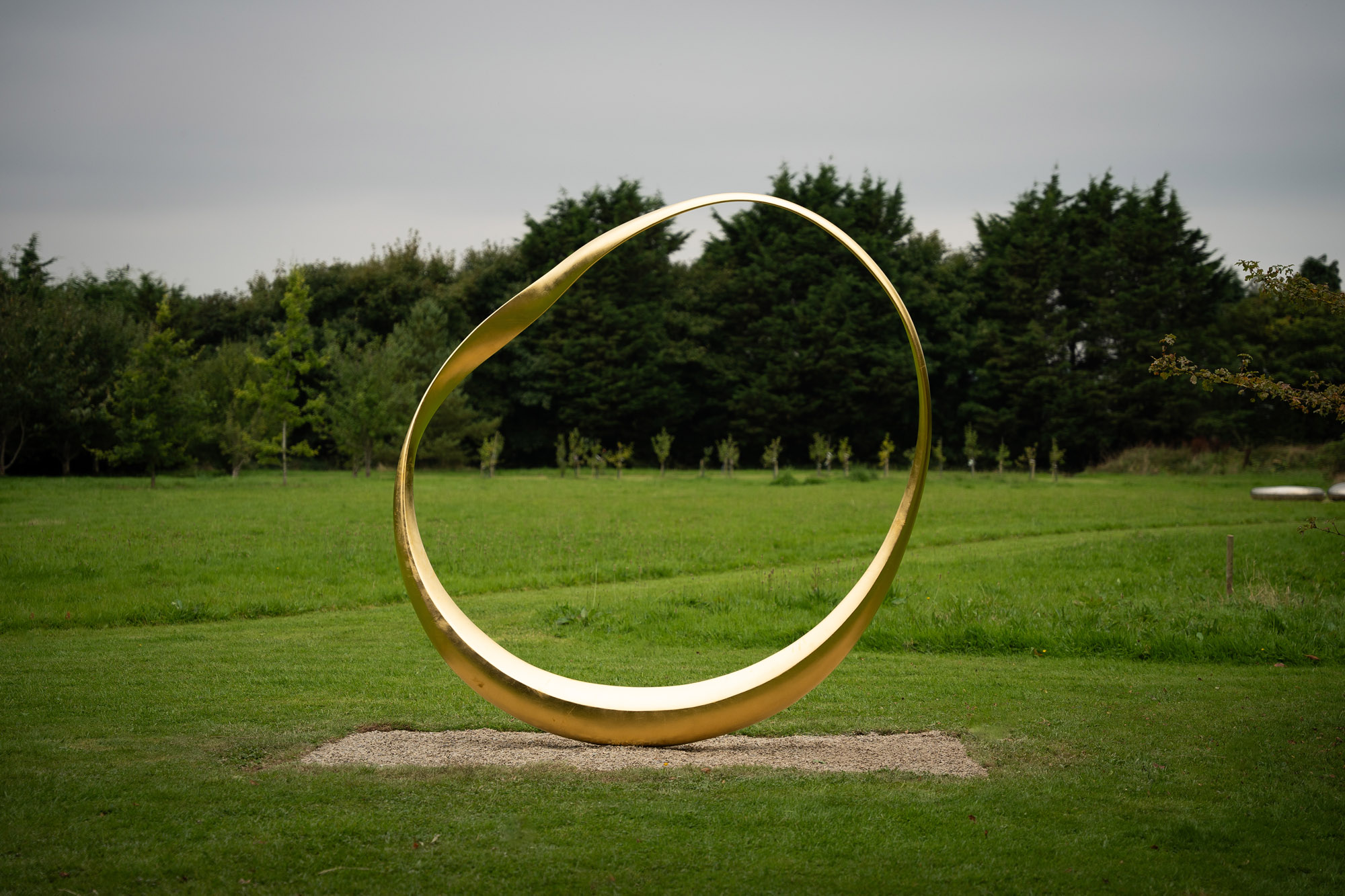Ahead of the curve: we visit D House, Ron Arad's latest project in Tokyo

The appearance of small but perfectly formed private houses on the streets of Tokyo is not a rare occurrence but even by the Japanese capital's high creative standards, passers-by will no doubt stop and admire the sweeping curves of the city's latest architectural addition. This private residence, found in the hip neighbourhood of Shibuya-ku in central Tokyo, features the unmistakable signature of quality and experimentation of London based designer Ron Arad.
Created with the help of local firm Issho who were the project's collaborating architects, and located on a densely built street of two- and three-storey detached homes, the new-build D House spans 180 sq m and three aboveground levels.
'Somehow I always kept away from 'interior design' projects, especially those based within new buildings designed by other architects,' says Arad. 'I never thought I will find myself doing "exterior design" to another architect's build, with the aid of Skype and WeTransfer, but this turned out to be a joy. Behind every good, interesting project lies a good, interesting client, and in this case we are fortunate to have also had Issho – a great collaborating practice.'
A ground floor hosting the garage and utility areas, leads to a piano nobile that features an open plan living room, kitchen and dinning area. The top, second, level includes two bedrooms and a bathroom. A separate set of stairs provides access to a larger roof terrace at the top.
More terraces are formed from the main elevation's curves and the building's cascading shape – outdoors spaces are topped up by a small garden at the back and a front courtyard, which is hugged by the steel sheet's bend.
The building's relatively narrow profile is maximised by an expressive front façade made of a stack of patinated (on site) steel ribbons, which were fabricated locally, in a workshop just outside Tokyo. This adds dynamism to the house's main concrete frame and creates a strong sense of movement and a play with light and shadow in the house.
In addition to this, the house's stacked elements were designed to decrease in height, the higher up the level, to underline further the overall form. This sculptural dwelling is no doubt the narrow street's most dynamic new addition.

Clad in curved and patinated steel ribbons, the house spans three levels above ground. The size of the stacked elements decreases as the height increases, which creates an especially dynamic facade

The steel parts emphasise a sense of movement on the facade and create a play of light and shadow inside and out

A series of outdoor areas are also created by the house's dramatic volume. This includes terraces on higher levels and a courtyard at the front, which is defined by the steel sheets' curve
INFORMATION
For more information, visit Ron Arad’s website
Photography: Anatole Papafilippou
Wallpaper* Newsletter
Receive our daily digest of inspiration, escapism and design stories from around the world direct to your inbox.
Ellie Stathaki is the Architecture & Environment Director at Wallpaper*. She trained as an architect at the Aristotle University of Thessaloniki in Greece and studied architectural history at the Bartlett in London. Now an established journalist, she has been a member of the Wallpaper* team since 2006, visiting buildings across the globe and interviewing leading architects such as Tadao Ando and Rem Koolhaas. Ellie has also taken part in judging panels, moderated events, curated shows and contributed in books, such as The Contemporary House (Thames & Hudson, 2018), Glenn Sestig Architecture Diary (2020) and House London (2022).
-
 Put these emerging artists on your radar
Put these emerging artists on your radarThis crop of six new talents is poised to shake up the art world. Get to know them now
By Tianna Williams
-
 Dining at Pyrá feels like a Mediterranean kiss on both cheeks
Dining at Pyrá feels like a Mediterranean kiss on both cheeksDesigned by House of Dré, this Lonsdale Road addition dishes up an enticing fusion of Greek and Spanish cooking
By Sofia de la Cruz
-
 Creased, crumpled: S/S 2025 menswear is about clothes that have ‘lived a life’
Creased, crumpled: S/S 2025 menswear is about clothes that have ‘lived a life’The S/S 2025 menswear collections see designers embrace the creased and the crumpled, conjuring a mood of laidback languor that ran through the season – captured here by photographer Steve Harnacke and stylist Nicola Neri for Wallpaper*
By Jack Moss
-
 2025 Expo Osaka: Ireland is having a moment in Japan
2025 Expo Osaka: Ireland is having a moment in JapanAt 2025 Expo Osaka, a new sculpture for the Irish pavilion brings together two nations for a harmonious dialogue between place and time, material and form
By Danielle Demetriou
-
 Tour the brutalist Ginza Sony Park, Tokyo's newest urban hub
Tour the brutalist Ginza Sony Park, Tokyo's newest urban hubGinza Sony Park opens in all its brutalist glory, the tech giant’s new building that is designed to embrace the public, offering exhibitions and freely accessible space
By Jens H Jensen
-
 A first look at Expo 2025 Osaka's experimental architecture
A first look at Expo 2025 Osaka's experimental architectureExpo 2025 Osaka prepares to throw open its doors in April; we preview the world festival, its developments and highlights
By Danielle Demetriou
-
 Ten contemporary homes that are pushing the boundaries of architecture
Ten contemporary homes that are pushing the boundaries of architectureA new book detailing 59 visually intriguing and technologically impressive contemporary houses shines a light on how architecture is evolving
By Anna Solomon
-
 And the RIBA Royal Gold Medal 2025 goes to... SANAA!
And the RIBA Royal Gold Medal 2025 goes to... SANAA!The RIBA Royal Gold Medal 2025 winner is announced – Japanese studio SANAA scoops the prestigious architecture industry accolade
By Ellie Stathaki
-
 Architect Sou Fujimoto explains how the ‘idea of the forest’ is central to everything
Architect Sou Fujimoto explains how the ‘idea of the forest’ is central to everythingSou Fujimoto has been masterminding the upcoming Expo 2025 Osaka for the past five years, as the site’s design producer. To mark the 2025 Wallpaper* Design Awards, the Japanese architect talks to us about 2024, the year ahead, and materiality, nature, diversity and technological advances
By Sou Fujimoto
-
 Tadao Ando: the self-taught contemporary architecture master who 'converts feelings into physical form’
Tadao Ando: the self-taught contemporary architecture master who 'converts feelings into physical form’Tadao Ando is a self-taught architect who rose to become one of contemporary architecture's biggest stars. Here, we explore the Japanese master's origins, journey and finest works
By Edwin Heathcote
-
 The Kumagaya House in Saitama is a modest family home subdivided by a soaring interior
The Kumagaya House in Saitama is a modest family home subdivided by a soaring interiorThis Kumagaya House is a domestic puzzle box taking the art of the Japanese house to another level as it intersects a minimal interior with exterior spaces, balconies and walkways
By Jonathan Bell